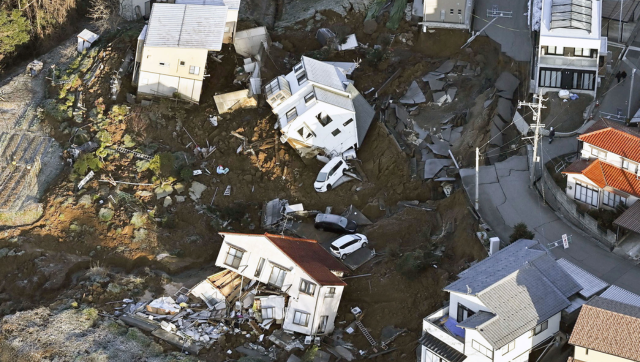Following a strong earthquake that left at least 62 people dead, Japanese rescuers raced to look for survivors on Wednesday while authorities issued landslide and heavy rain warnings. The major island of Honshu experienced a 7.5-magnitude earthquake on January 1 that rocked Ishikawa prefecture, caused tsunami waves more than a meter high, started a large fire, and destroyed roads. Before-and-after satellite photos released on Wednesday demonstrate how badly the prefecture was hit, with several hundred buildings destroyed by fire and houses completely destroyed in several towns, including Wajima and Suzu. On Wednesday, the regional government declared that over 300 people had been hurt, 20 of them critically, and that 62 deaths had been confirmed. The toll was expected to climb as rescuers battle aftershocks and poor weather to comb through rubble. More than 31,800 people were in shelters, the government said. “More than 40 hours have passed since the disaster. We have received a lot of information about people in need of rescue and there are people waiting for help,” Prime Minister Fumio Kishida said Wednesday after an emergency task force meeting. “Rescue efforts are being made by the local authorities, police, firefighters and other operational units, while the number of personnel and rescue dogs is enhanced. “However, we ask you to remain fully mindful that we are in a race against time and to continue to do your utmost to save lives, putting people’s lives first,” Kishida said. The operation was given extra urgency as the Japan Meteorological Agency (JMA) issued a heavy rain warning in the area. “Be on the lookout for landslides until the evening of Wednesday,” the agency said. In the coastal city of Suzu, mayor Masuhiro Izumiya said there were “almost no houses standing”. “About 90 percent of the houses (in the town) are completely or almost completely destroyed… the situation is really catastrophic,” he said, according to broadcaster TBS. A woman at a shelter in the town of Shika told TV Asahi that she “hasn’t been able to sleep” due to aftershocks. “I’ve been scared because we don’t know when the next quake will hit,” she said. Nearly 34,000 households were still without power in Ishikawa prefecture, the local utility said. Many cities were without running water. Shinkansen bullet trains and highways have resumed operations after several thousand people were stranded, some for almost 24 hours. The US Geological Survey said the quake had a magnitude of 7.5, while the JMA measured it at 7.6, triggering a major tsunami warning. The powerful quake was one of more than 400 to shake the region through Wednesday morning, the JMA said. Japan lifted all tsunami warnings after waves at least 1.2 metres (four feet) high hit the town of Wajima and a series of smaller tsunamis were reported elsewhere. Japan experiences hundreds of earthquakes every year and the vast majority cause no damage. The number of earthquakes in the Noto Peninsula region has been steadily increasing since 2018, a Japanese government report said last year. The country is haunted by a massive 9.0-magnitude undersea quake off northeastern Japan in 2011, which triggered a tsunami that left around 18,500 people dead or missing. It also swamped the Fukushima atomic plant, causing one of the world’s worst nuclear disasters. (With inputs from AFP)
Before-and-after satellite photos released on Wednesday demonstrate how badly the prefecture was hit, with several hundred buildings destroyed by fire and houses completely destroyed in several towns, including Wajima and Suzu
Advertisement
End of Article


)

)
)
)
)
)
)
)
)



